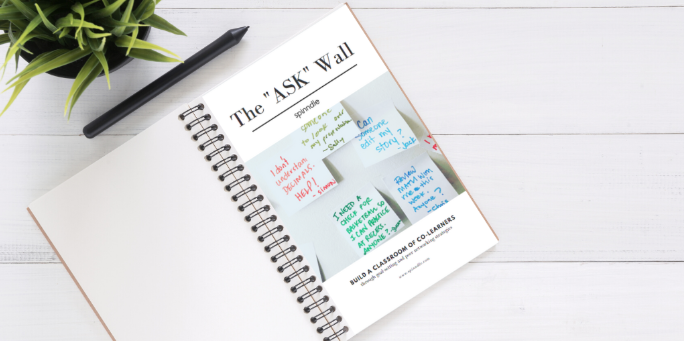Help your students drive their learning in PBL: How to help students identify their Need To Knows
Guest post by Jacqueline Robillard and Kristina Tzetzos
According to PBLWorks, problem-based learning engages students in solving a real world problem or answering a complex question, demonstrate their knowledge and skills by creating a real product or presentation for a real audience, all while developing real skills like communication, critical thinking, and creative thinking—skills that are increasingly more important in our rapidly changing workspaces. .
This is what's appealing about PBL and truly all experiential, deeper learning initiatives out there: how can we make what we're doing inside the classroom relevant to the world outside of it? Not only to get students thinking about real issues, but also to develop the foundational skills necessary to succeed in the modern workplace. As hard as we work to bridge the classroom and the wider world, there remains a great disconnect.
The flow of work in a classroom doesn't mirror the flow of work in the real world.

Adults rely on their peers to get things done—we have staff meetings, we network, we seek out subject experts. Students should too. Not only has their role shifted from passive learner to self-directed learner, but they must also wear the hat of co-learner: understanding what it means to contribute, collaborate, and connect outside of themselves. What if we taught students to support, inspire, challenge and keep each other accountable?
In what workplace do all communications, iterations, feedback and collaborations flow directly through the big ol' boss? Almost never. And yet, teachers are expected to oversee every aspect of learning for every single one of their students who are on unique learning journeys. As a teacher, my job was to guide, challenge, monitor and provide tailored formative feedback to each student so that they could move forward in their learning. Teachers are turning to technology as a way to "keep up" with each student, but existing tech is modeled after the traditional workflow of a classroom where everything goes through the teacher.
What if we decentralized the classroom using technology so that progress was no longer bottlenecked at the teacher and students were actively managing and directing their own learning? This is Spinndle. As a classroom-based social network, students have a constant sounding board for their ideas. They share updates to their peers, get insight and feedback so they can take charge of their own learning and move forward independently.
Navigating this independence is challenging for students when they cannot identify what they need support with.
This is a major shift in education. Traditionally, teachers used to assess their students and decide what their next steps should be. Now, with student-directed learning like PBL, we want students to become active assessors, judging their progress for themselves and determining what supports they need in order to accomplish their goals. We must teach our students to begin with the end in mind: help them develop strong goal-setting skills so they can break down a project into long-term goals and short-term tasks. Doing this will provide clarity on areas of support-—help them identify immediate "asks" or NTK's.
On Spinndle, students have the opportunity to put forth these "asks" to each other. Tailored, valuable feedback is much more likely to be provided to students who have been very specific with what they need help with: "Does anyone know a chef I can interview for my project?" rather than seeking general feedback such as, "What do you think of my project so far?"
These goal-setting and networking opportunities help foster the real world skills we want our students to develop.
Spinndle has provided a free resource, The "Ask" Wall, to help teachers guide their students on how to do this goal-setting breakdown: long-term goals > short-term tasks > immediate "asks." Use this technique to create a co-learning culture in your classrooms.
Build a classroom of co-learners with The "ASK" Wall.
—
Spinndle facilitates student-led learning experiences — think PBL, STE(A)M, Inquiry, Capstone. As a social network where students direct and manage their own learning, Spinndle gives students a constant sounding board for their ideas. Their progress is no longer bottlenecked at the teacher. Spinndle reinvents the flow of work in a classroom so that students are building the skills necessary to succeed in the modern workplace. Teachers get a one-stop-shop to track all the pieces and parts of a student-led project start to finish. For more, visit www.spinndle.com.

